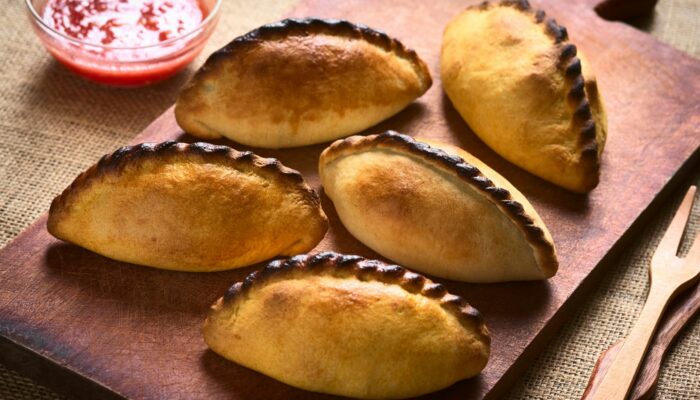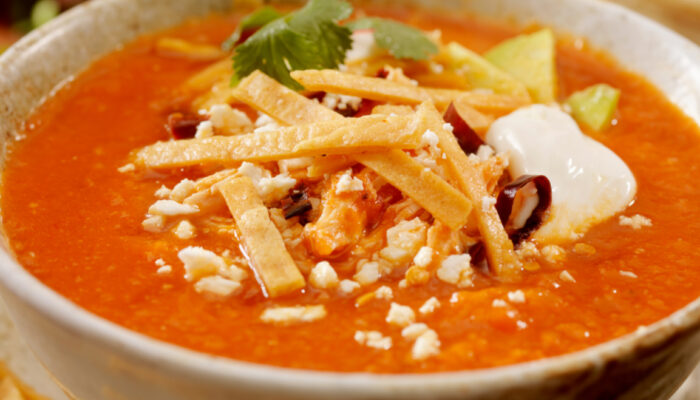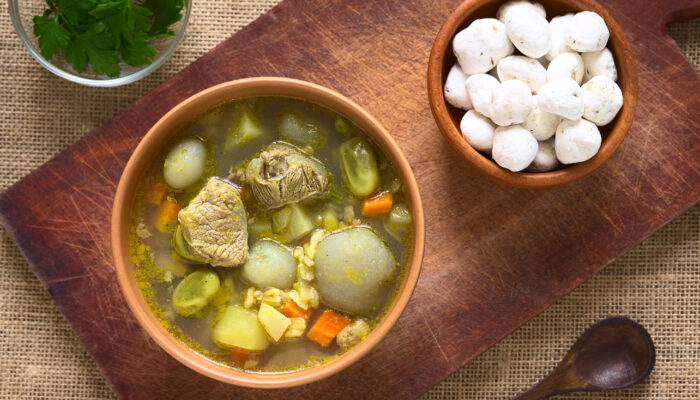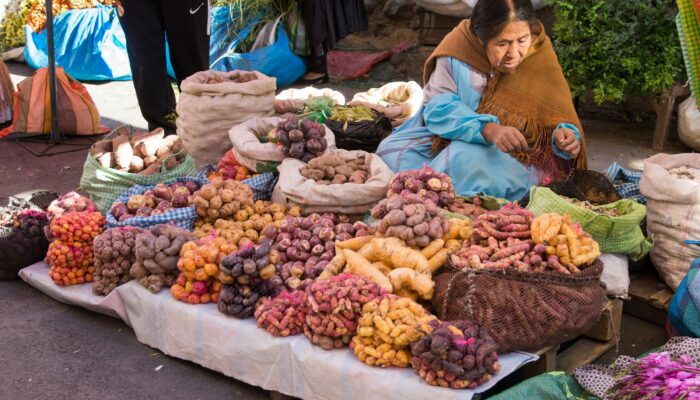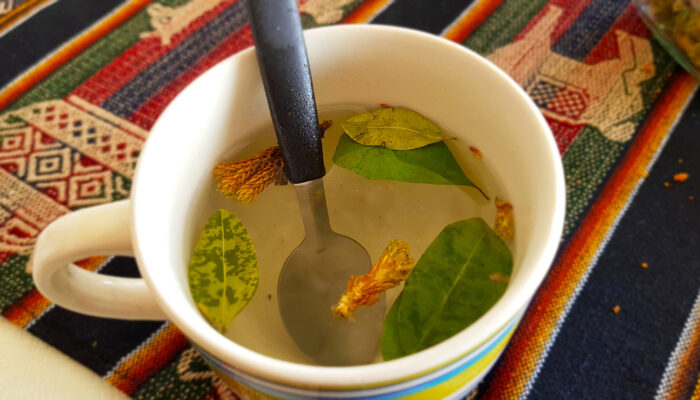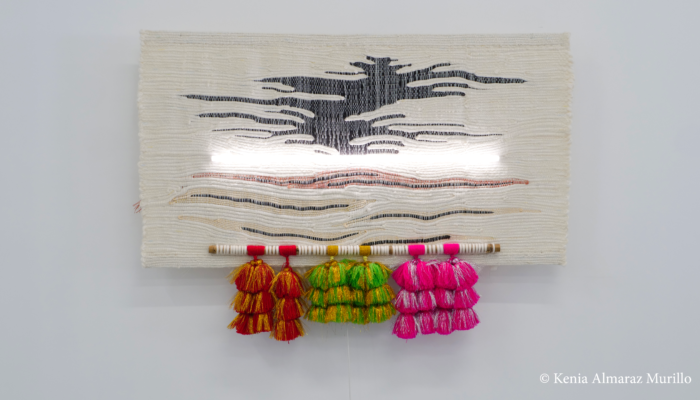But what do you eat in Bolivia? The country’s reputation as a culinary powerhouse is misplaced, so it’s time to give it the attention and passion it deserves!
A cuisine as little-known as it is intense, it is an exquisite blend of indigenous Inca and Spanish cultures, imported by the colonists. But its best asset is surely the variety of products available on its soil, as the territory has one of the richest biodiversities in the world.
Gastronomy is a source of sharing and pride for the locals, so we invite you to untie your pallet and discover, if you haven’t already done so, the infinity of flavours, the immensity of colors and the multitude of stories it hides.
From restaurants to markets and street food, Thaki Voyage takes you on a mouth-watering tour of Bolivian food. So get ready, 1,2,3, taste!
Throughout the day: traditional food...
Start the day with salteñas. This type of empañada is made with beef, potatoes, eggs, peas, broth and spicy sauce. It’s also a hearty snack to enjoy in the morning or when you’re feeling a bit peckish, just like cuñape, a bread made from cheese and yucca (manioc) flour, which you’ll find everywhere!
During your stay, you’ll find that meat dominates most dishes, whether it’s chicken, beef or pork, which is very often accompanied by rice and potatoes. However, between these two starchy foods, plantains, quinoa and el maní (peanuts), used to make sopa de maní, present great options for vegetarians.
Also, don’t hesitate to sample the street food you’ll find in every alleyway. It’s a perfect illustration of Bolivian gastronomy, and keeps the country’s culinary culture alive.
It remains a favorite among the locals, who love their traditional dishes, such as las salchipapas, which are a common sight on every street corner. Indeed, no international restaurant chain has survived in Bolivia, so take advantage of the expertise of passionate hands, often those of cholitas, for guaranteed authenticity! And don’t be afraid of proportions – Bolivians are as generous in life as they are in their food!
From north to south, Bolivia's infinite identity...
From the Amazon, through the plains, to the high plateaus, the birthplace of quinoa, you’ll find a festival of recipes that differ from region to region, as the country is made up of a wide range of geographical and climatic diversity.
In the Altiplano, altitude and cold call for a rich diet, which is why hot beverages such as el mate de coca are so popular. It’s highly appreciated for its anti-stress properties.
Regardless of the region, the main meal begins with the traditional sopa, as soup is the essential starter in Bolivia. You can enjoy it differently in each city, as in Santa Cruz, el locro, or in La Paz, el chairo, served in an earthenware pot. It’s made from dehydrated lamb, beef and potatoes, el chuño, using an ancestral dehydration technique that keeps for a long time. Its taste is unique and unusual: it’s up to you to try it!
A staple food, the papa (potato) originated in the Andes and has adapted to the climate of the central highlands thanks to its nourishing qualities. In Cochabamba, the famous dish created in the city in 1969, el Pique Macho, with beef, sausages, eggs, French fries, onions and tomato, delights young and old alike!
Very complete and colorful, this dish inherited its name because of its spiciness and the sheer number of ingredients: a dish for real men… a little macho, don’t you think?
It’s a classic of Bolivian gastronomy, but it’s also possible to eat a “sea” version under the name of Pique de surubi. In fact, you’ll also find fish in the country, such as trucha, the trout of Lake Titicaca, which is an absolute must!
Throughout the year: Bolivia's festive culinary rituals...
Let’s take a look at chicha, very popular in Bolivia! This alcoholic beverage is made from corn and fruit, and its fermentation varies from a few days to several months, giving it a more or less pronounced alcohol content.
Mostly consumed in rural areas, it is drunk on religious holidays or as part of everyday life, like el api, which is drunk mainly at breakfast, but also on important occasions such as Christmas.
And what would Christmas be without api, made from yellow or purple maīs, sugar, cinnamon and cloves. This hot drink is served on Christmas Day with buñuelos, deep-fried and similar to fritters.
In Bolivia, cooking is a celebration, where every dish is designed to bring a smile to the face. What’s more, Bolivians have a real respect for food, which is linked to the Pachamama. Indeed, many culinary rituals are intertwined with Andean rites and the cult of fertile Mother Earth, which produces delicious fruit available on every market stall.
It would be impossible to list all of Bolivia’s specialties, and the best way to get to know them is to taste them. These ancestral recipes, full of life, will tell you their story and that of the country, because to know the flavours of a land is to learn to discover it.
Bolivia’s cultural heritage will dazzle you, so come and explore its culinary palette, because Thaki Voyage confirms: in Bolivia, we eat well!
Mathilde Leroux

